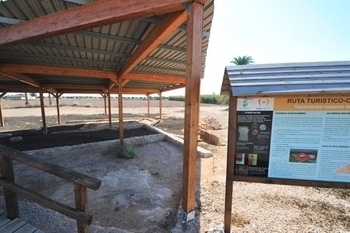- Region
- Águilas
- Alhama de Murcia
- Jumilla
- Lorca
- Los Alcázares
- Mazarrón
- San Javier
-
ALL AREAS & TOWNS
- AREAS
- SOUTH WEST
- MAR MENOR
- MURCIA CITY & CENTRAL
- NORTH & NORTH WEST
- TOWNS
- Abanilla
- Abarán
- Aguilas
- Alamillo
- Alcantarilla
- Aledo
- Alhama de Murcia
- Archena
- Balsicas
- Blanca
- Bolnuevo
- Bullas
- Cañadas del Romero
- Cabo de Palos
- Calasparra
- Camping Bolnuevo
- Campo De Ricote
- Camposol
- Canada De La Lena
- Caravaca de la Cruz
- Cartagena
- Cehegin
- Ceuti
- Cieza
- Condado de Alhama
- Corvera
- Costa Cálida
- Cuevas De Almanzora
- Cuevas de Reyllo
- El Carmoli
- El Mojon
- El Molino (Puerto Lumbreras)
- El Pareton / Cantareros
- El Raso
- El Valle Golf Resort
- Fortuna
- Fuente Alamo
- Hacienda del Alamo Golf Resort
- Hacienda Riquelme Golf Resort
- Isla Plana
- Islas Menores & Mar de Cristal
- Jumilla
- La Azohia
- La Charca
- La Manga Club
- La Manga del Mar Menor
- La Pinilla
- La Puebla
- La Torre
- La Torre Golf Resort
- La Unión
- Las Palas
- Las Ramblas
- Las Ramblas Golf
- Las Torres de Cotillas
- Leiva
- Librilla
- Lo Pagan
- Lo Santiago
- Lorca
- Lorquí
- Los Alcázares
- Los Balcones
- Los Belones
- Los Canovas
- Los Nietos
- Los Perez (Tallante)
- Los Urrutias
- Los Ventorrillos
- Mar De Cristal
- Mar Menor
- Mar Menor Golf Resort
- Mazarrón
- Mazarrón Country Club
- Molina de Segura
- Moratalla
- Mula
- Murcia City
- Murcia Property
- Pareton
- Peraleja Golf Resort
- Perin
- Pilar de la Horadada
- Pinar de Campoverde
- Pinoso
- Playa Honda
- Playa Honda / Playa Paraíso
- Pliego
- Portmán
- Pozo Estrecho
- Puerto de Mazarrón
- Puerto Lumbreras
- Puntas De Calnegre
- Region of Murcia
- Ricote
- Roda Golf Resort
- Roldan
- Roldan and Lo Ferro
- San Javier
- San Pedro del Pinatar
- Santiago de la Ribera
- Sierra Espuña
- Sucina
- Tallante
- Terrazas de la Torre Golf Resort
- Torre Pacheco
- Totana
- What's On Weekly Bulletin
- Yecla


- EDITIONS:
 Spanish News Today
Spanish News Today
 Alicante Today
Alicante Today
 Andalucia Today
Andalucia Today
The Roman Villa of La Raya
La Raya, Roman Villa
 The Roman Villa of la Raya is a building which is believed to have been occupied from the second half of the 2nd century BC to the first decades of the 3rd Century AD, so roughly 150 BC to 300 AD, a period of about 450 years.
The Roman Villa of la Raya is a building which is believed to have been occupied from the second half of the 2nd century BC to the first decades of the 3rd Century AD, so roughly 150 BC to 300 AD, a period of about 450 years.
The first indication of the presence of the villa was in 2001/2002 when routine checks were being carried out to reclassify the land for urban building use, and the discovery of ceramic fragments on the surface lead to the decision to carry out a further exploration. A preliminary excavation revealed the existence of walls with decorative finishes and excavations in 2003 and 2006 revealed the presence of a substantial roman villa.
The excavations to date have only revealed probably a quarter of what actually lies beneath the surface, but unfortunately an access road cuts right through the centre of the site, and the land on the other side of the road falls within the municipality of Pilar de la Horadada which is in Valencia, a completely different region.
The excavations have revealed what´s commonly known as the "pars urbana" section of the villa.
 Broadly speaking, stereotypical villas would comprise of both a pars urbana and a pars rustica, although it depended entirely on the function of the villa.
Broadly speaking, stereotypical villas would comprise of both a pars urbana and a pars rustica, although it depended entirely on the function of the villa.
These villas were often owned by an important family who may have had a town house in another location and only visited the villa to oversee the production of the villa and ensure that it was being run efficiently. In these cases, the pars urbana, the domestic quarters, would occupy a smaller proportion of the whole, whilst in other cases the villa was owned by a family as a first residence, in which case the pars urbana would be more substantial.
Although villas vary tremendously in both design and layout, a similar pattern is generally followed in villas built by the Romans.
Villa Urbana:pars urbana
The vestibulum (porch) and ostium (hall) would open up to the atrium which occupied the centre of the villa urbana. There would often be an opening in the ceiling where rainwater would fall into a pool (impluvium) below.
The atrium was the most important areas of the house – it would
often act as a reception room and would house the lararium (the
shrine to the household gods, lares).
The rest of the domus or villa urbana would be centred around the
atrium, and may consist of alae (wings – small recesses), tablinum (a
sort of study/family archive), triclinia (a dining room), and cubicula
(bedrooms).
Villa Rustica:pars rustica
The villa rustica was the ‘agricultural’ part of the villa, and as such
contained structures that were built for the purpose for the specific production of the estate.
These would often include rooms for storage, slaves
quarters (cellae), walled gardens, stables and rooms for production
such as wine and oil presses, threshing rooms, corn mills, drying sheds and compost heaps.
The sector of the villa which has been excavated appears to belong to the pars urbana, the rooms being orientated for occupancy during the winter months. Pieces of what´s known as opus signinum have been discovererd, a strong building material made from a combination of broken tiles or ceramics, mixed with mortar and beaten down with a hammer, forming a strong, durable finish. This is often used to line water containers or troughs used for salt fish production, or as in this case, to form a durable, waterproof floor.
Other remains have been found which indicate the presence at one time of thermal baths, and in the summer rooms, other finds include a block of marble.
Other walls indicate an area of storage, probably related to the agricultural activities of the villa, which would have contained large ceramic storage jars, and ceramic fragments come from a variety of sources, including Italy and Africa, relating to items commonly used in export goods.
The villa is located very close to the Vía Augusta, which runs all the way through the bottom of Spain and off into France, the original Mediterranean road highway which transported goods across the Roman Empire, and it appears that a path lead directly to the Via , also cutting across the Camino de la Hilada, which was a known livestock herding route, commonly used by transhumance shepherds moving their flocks in search of pasture. The location of the villa is obviously designed to have easy access to these routes, providing a transport advantage for shipping the goods produced.
The villa appears to have been built in 2 stages, the first part in the 1st and 2nd centuries BC, and then amplified in the 1st and 2nd centuries AD, and after this appears to have been dismantled, the building materials used for a different structure elsewhere, as was common practice.
The site has been protected with a simple roof structure, although today is seen as a few low walls, within a wire fence area.
Visitors can only peer through the fence at the display boards and look at a few remains of walls, so it isn´t the most exciting location to visit, but is nonethless, of great importance historically .
Where is the Roman Villa of La Raya?
The Roman Villa of La Raya can be accessed from the AP7, or N332, which leads down to the main boat roundabout in San Pedro del Pinatar.
Follow the sign marked to the Playas, and just past the garage on the left hand side is a tarmac road which leads down to the villa site.
Click for map, La Raya, San Pedro del Pinatar
article_detail
Cartagena
El Carmoli
Islas Menores and Mar de Cristal
La Manga Club
La Manga del Mar Menor
La Puebla
La Torre Golf Resort
La Union
Los Alcazares
Los Belones
Los Nietos
Los Urrutias
Mar Menor Golf Resort
Pilar de la Horadada
Playa Honda / Playa Paraiso
Portman
Roldan and Lo Ferro
San Javier
San Pedro del Pinatar
Santa Rosalia Lake and Life resort
Terrazas de la Torre Golf Resort
Torre Pacheco
Aledo
Alhama de Murcia
Bolnuevo
Camposol
Condado de Alhama
Fuente Alamo
Hacienda del Alamo Golf Resort
Lorca
Mazarron
Puerto de Mazarron
Puerto Lumbreras
Sierra Espuna
Totana
Abaran
Alcantarilla
Archena
Blanca
Corvera
El Valle Golf Resort
Hacienda Riquelme Golf Resort
Lorqui
Molina de Segura
Mosa Trajectum
Murcia City
Peraleja Golf Resort
Ricote
Sucina
Condado de Alhama
El Valle Golf Resort
Hacienda del Alamo Golf Resort
Hacienda Riquelme Golf Resort
Islas Menores and Mar de Cristal
La Manga Club
La Torre Golf Resort
Mar Menor Golf Resort
Mazarron Country Club
Mosa Trajectum
Peraleja Golf Resort
Santa Rosalia Lake and Life resort
Terrazas de la Torre Golf Resort
La Zenia
Lomas de Cabo Roig

CAMPOSOL TODAY Whats OnCartagena SpainCoronavirusCorvera Airport MurciaMurcia Gota Fria 2019Murcia property news generic threadWeekly Bulletin





















